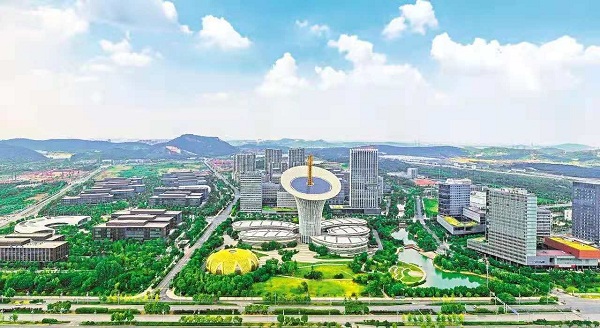Action plan leads path forward

The panoramic landscape of the Optics Valley of China. [Photo/Optics Valley of China]
The East Lake High-tech Development Zone (also known as Optics Valley of China, or OVC), located in Wuhan, Central China's Hubei province, was founded in 1988.
It has grown into a sci-tech powerhouse after 35 years of strenuous efforts. It is now the world's largest optical fiber and cable R&D and manufacturing base and China's largest optical device production base and small and medium-sized display manufacturing base.
The Hubei Provincial People's Government released the Action Plan to Make OVC Globally Influential on Sept 25, revealing the valley's overall objectives from 2023 to 35.
According to the plan, by 2025 the valley's optoelectronic information industry should play a leading role in China, with the quantum science and technology, artificial intelligence and other related frontier sectors also doing well.
Additionally, the valley is expected to build one national-level laboratory, tackle 100 core technologies, cultivate one sci-tech giant worth 100 billion yuan ($13.93 billion) and 10,000 high-tech enterprises, and form one 1-trillion-yuan-level industrial cluster.
By 2035, OVC is expected to become a globally influential sci-tech innovation hub, the world's optoelectronic information benchmark, and a renowned sci-tech new city that is hospitable, sustainable, intelligent and people-oriented.
The plan also listed specific measures to be implemented, which mainly focus on original sci-tech innovation, strengthening emerging sectors related to optoelectronic information, optimizing the distribution of all key resources, and coordination work and policy efforts to be made by the valley's government.
Ten crucial measures to be taken to ensure a sound start to the action plan were put forward, such as building the world-class Optics Valley Science Island and setting up world-leading silicon photonic chip research platforms.
The valley is urged to further improve relevant laws and regulations, expand investment to leverage social capital and build an industrial investment fund cluster, increase land supplies to prioritize land use demands from sci-tech firms and innovation platforms, and invite more experts and industry insiders to participate in social governance.


